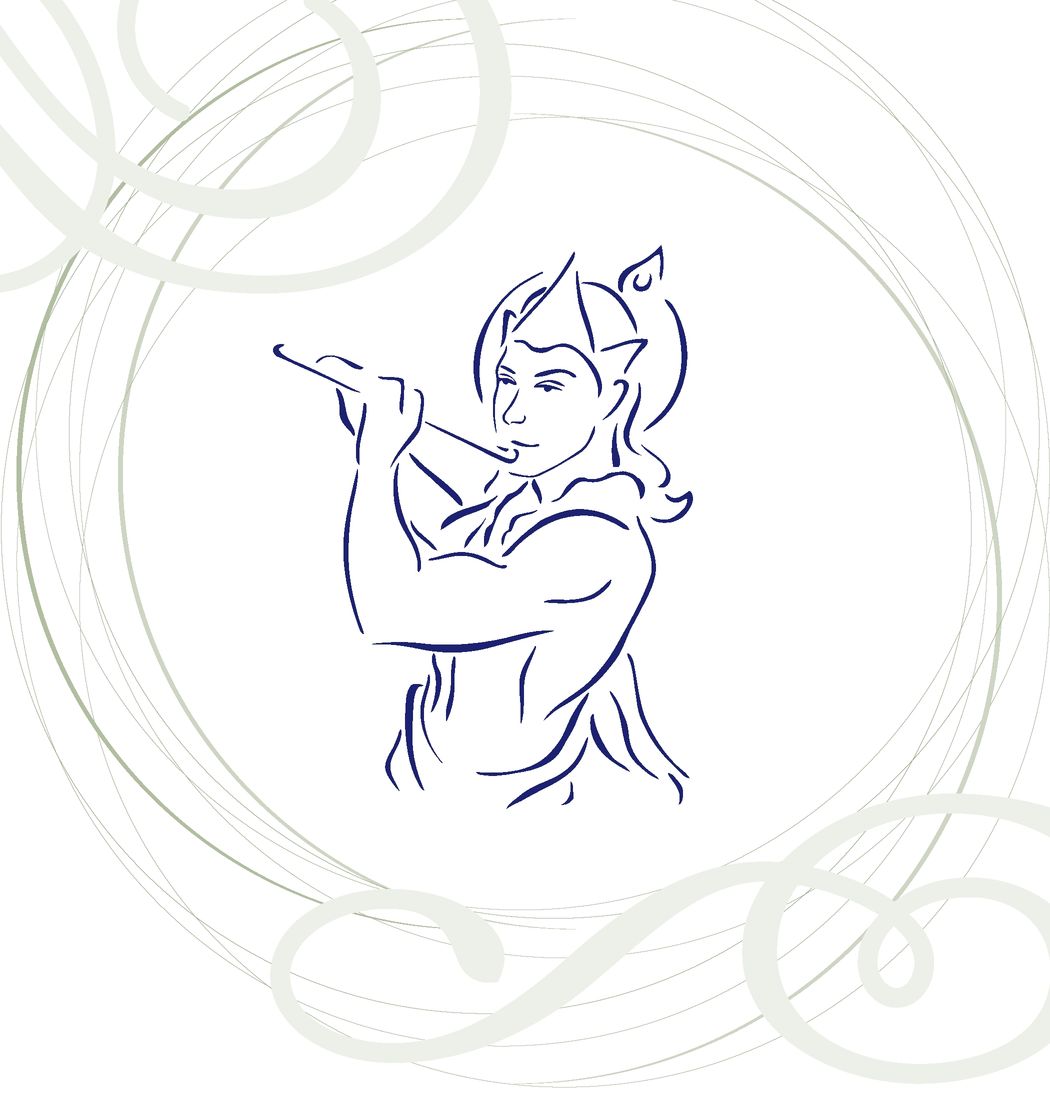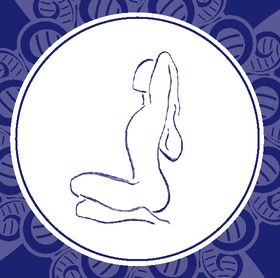gomukhasana
COW FACE POSE
This posture is said to resemble the face (mukh) of a cow (go). From a seated position, the practitioner places one bent knee over the other, forming the cow’s lips. One arm goes laterally behind the back, and the fingers grasp the fingers of the other arm, which is bent over the corresponding shoulder (forming the cow’s ears). This asana tones and strengthens the ankles, hips, thighs, and shoulders.
The Holy Cow
The cow is one of India’s holiest animals. Cows are the kings of cool, roaming placidly in public places or standing in the middle of some highway, where cars, the holy cow of modern times, try to avoid hitting them at any cost. The cow is considered to be the giver of plenty. In India all of the cow’s products are used: Its strength helps farmers plow the field; its urine is a strong antiseptic; its dung makes excellent fuel for stoves; and its milk yields butter and ghee. (Indians use the latter for both cooking and a variety of religious rituals.)
The cow is also the embodiment of different yogic qualities. Cows are very peaceful and down-to-earth. They are also generous and motherly and are in fact considered to be one of the universal mothers. When the mother cow sees her calf, her milk flows freely and abundantly. The relationship between the cow and her calf is therefore the perfect symbol for the relationship between the earth and its inhabitants. Like a calf, we can give the earth our love while using her gifts in a sustainable and wholesome way.
Krishna, the Divine Cow Herder
Among Krishna’s many names is Gopala, “the protector of the cows,” and Govinda, “one who takes care of the cows.” At one time, Brahma, the creator of the universe, sincerely doubted Krishna’s divinity. He thought to himself, “How can this simple cow herder be an avatar of Vishnu? He is just a simple peasant boy. He has a flute tucked into his belt, and a peacock feather in his hair. And he walks barefoot in the forest!” Brahma decided to put Krishna to the test.

One fine day while Krishna was resting with his cowherd friends in the forest, Brahma kidnapped the cowherd boys and the calves and hid them in a cave. When Brahma returned to see how Krishna was reacting upon discovering his loss, he found, to his amazement, that Krishna was playing with all the cowherd boys and the calves he had just stolen. So Brahma went back to the cave, where he saw all the calves and boys he had originally hidden. Brahma looked with all four of his heads at the same time—at the cave and at Krishna—and saw that somehow all the calves and boys had doubles. Krishna had actually multiplied his very self into calves and cowherd boys to thwart Brahma.
Brahma had not understood this simple cow herder’s divinity or his ability to be all things for all people. Krishna was able to be the cows for the cow herders, and the hidden cows and cow-herding boys for Brahma. And for us, the spirit of Krishna can be found in in the form of anyone whose company we adore. The name Krishna literally means “all attractive.” We can be attractive to another person by being what he or she needs—a son, daughter, coworker, or shoulder to cry on. While we are sitting in the cow-face pose, we are putting on another face, just as we might when we put our “all attractive” nature for the benefit of the people in our lives whom we adore.


